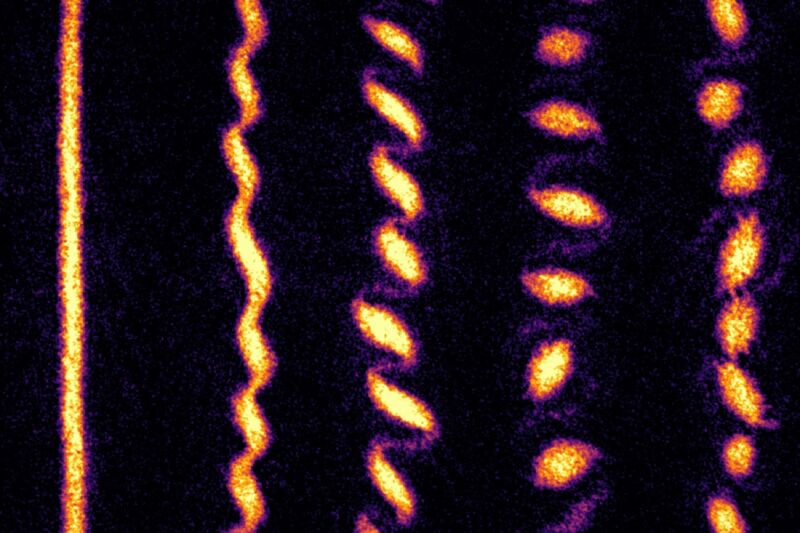Physicists discover that clouds of ultracold atoms can form “quantum tornadoes”

Enlarge / (l-r) A quantum gas appears first as an elongated rod. As it rotates, it becomes helical, then it breaks up into blobs, each a swirling mass. Between the blobs tiny vortices appear in a regularly repeating series. (credit: MIT/Nature)
Physicists at MIT have succeeded in getting "quantum tornadoes" to form in clouds of ultracold atoms, according to a recent paper published in the journal Nature. This is the first direct, in situ documentation of how a rapidly rotating quantum gas evolves, and per the authors, the process resembles how the rotational effects of the Earth can give rise to large-scale weather patterns.
The MIT scientists were interested in studying so-called quantum Hall fluids. First discovered in the 1980s, quantum Hall fluids are composed of clouds of electrons floating in magnetic fields. In a classical system, the electrons would repel each other and form a crystal. But in quantum Hall fluids, the electrons mimic the behavior of their neighbors-evidence of quantum correlation.
"People discovered all kinds of amazing properties, and the reason was, in a magnetic field, electrons are (classically) frozen in place-all their kinetic energy is switched off, and what's left is purely interactions," said co-author Richard Fletcher, a physicist at MIT. "So, this whole world emerged. But it was extremely hard to observe and understand."
Read 12 remaining paragraphs | Comments